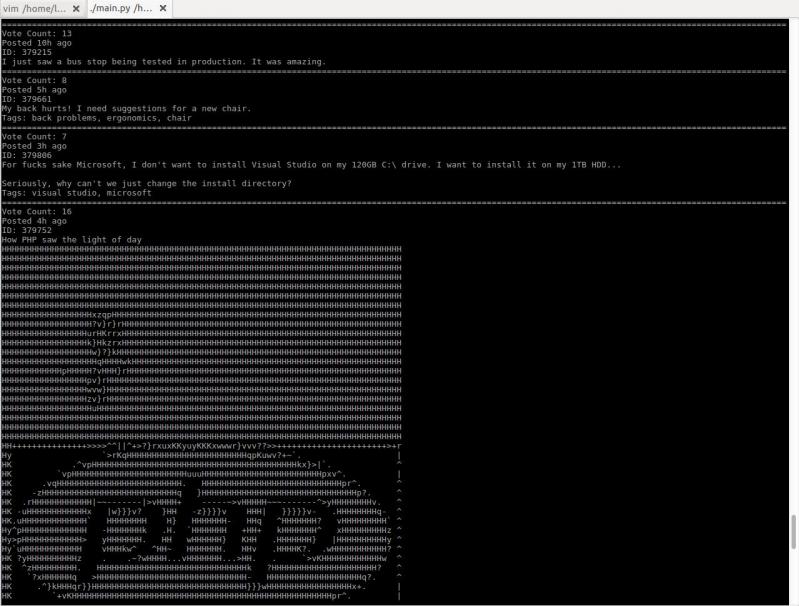Join devRant
Do all the things like
++ or -- rants, post your own rants, comment on others' rants and build your customized dev avatar
Sign Up
Pipeless API

From the creators of devRant, Pipeless lets you power real-time personalized recommendations and activity feeds using a simple API
Learn More
Related Rants

 No questions asked
No questions asked As a Python user and the fucking unicode mess, this is sooooo mean!
As a Python user and the fucking unicode mess, this is sooooo mean! I just started working on a little project to browse devrant from terminal. It converts images to ascii art!
I just started working on a little project to browse devrant from terminal. It converts images to ascii art!
When I was about 10 I tried to make a basic midi sequencer/synthesiser using just the python standard library.
The only sound production there was was winsound.beep, which played a sine wave at the frequency given.
I realised that if I put enough really short beeps together I could make some mildly convincing instruments - I remember an electric piano, acoustic guitar, some kind of bass synth, and maybe more?
Then I put them together to make a song. The problem was though that you can't play multiple notes together as winsound.beep was blocking (though I didn't understand that at the time).
I had no knowledge of threading or async so I opened multiple python interpreter instances to play multiple channels. That's how I learnt about command-line arguments!
But I really struggled to get the sounds to be in time because python is not exactly rapid.
I made a kind of note sequencer using a library called easygui, based on tkinter (TCL wrapper), and I remember being told off at school for bringing in a usb stick with the exe of my program that I made with py2exe.
So many old technologies and fond memories...
rant
python
sound
midi
wk159
synth
tkinter